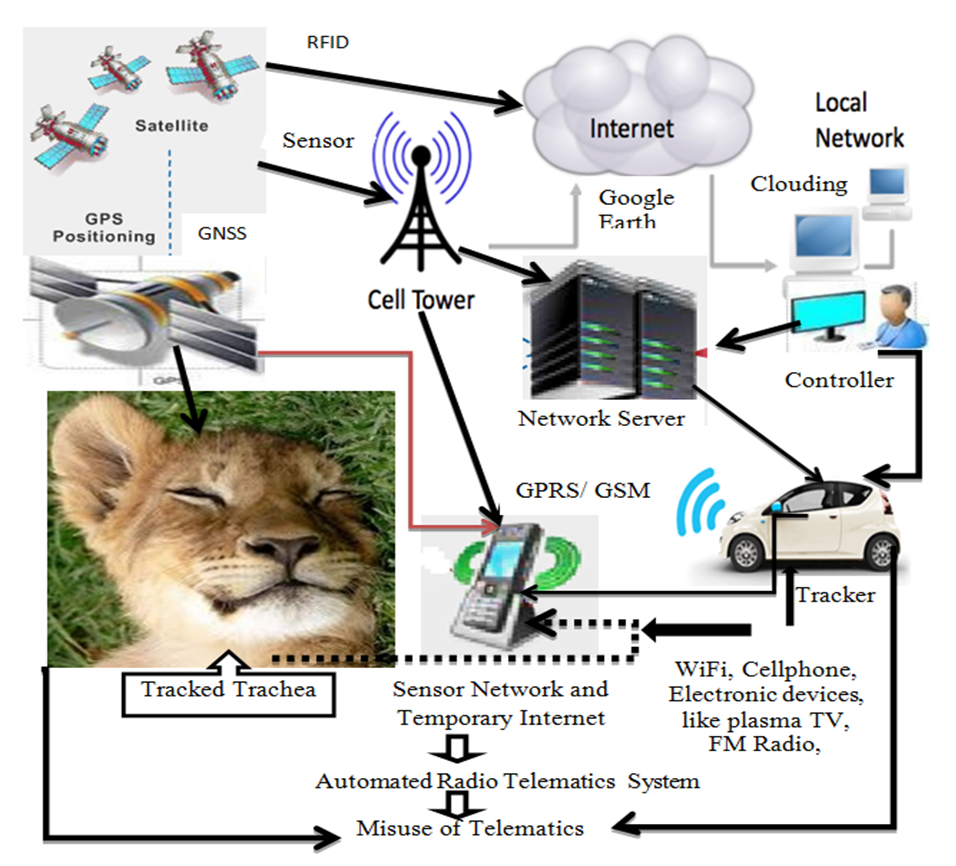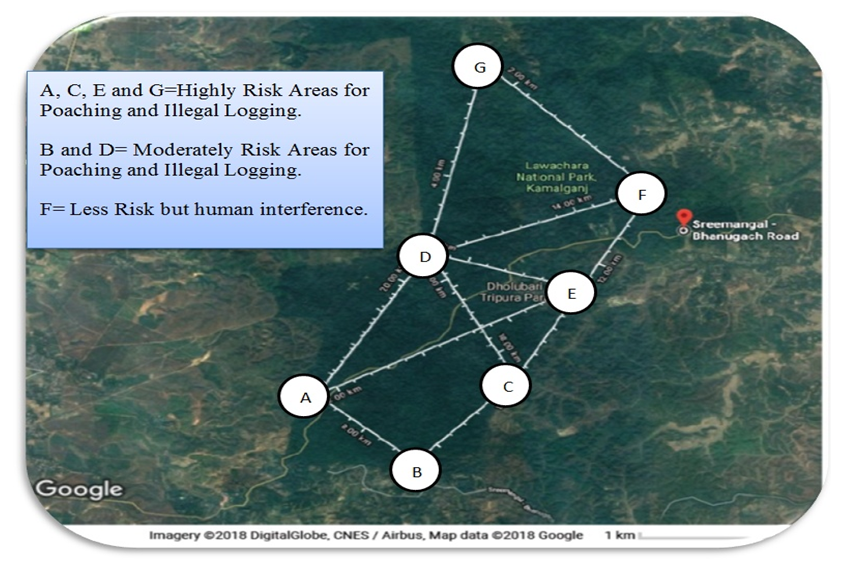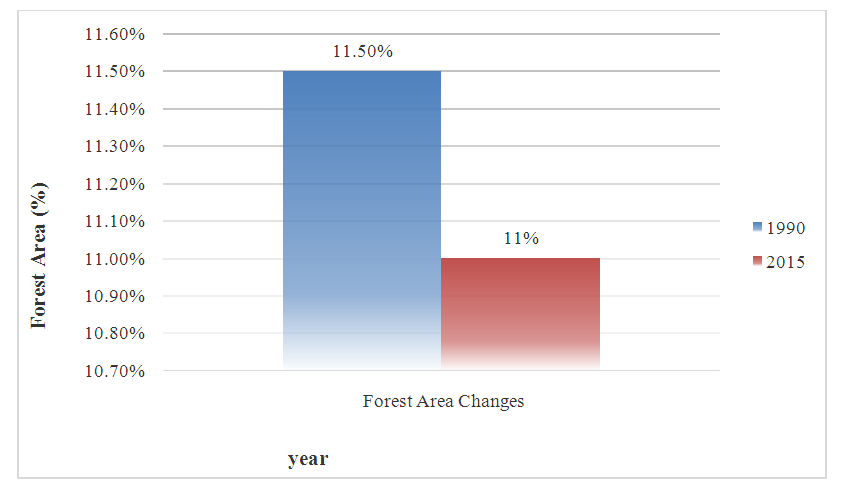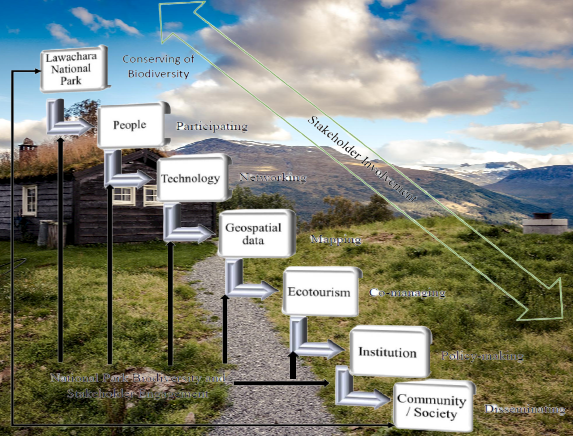-
Paper Information
- Paper Submission
-
Journal Information
- About This Journal
- Editorial Board
- Current Issue
- Archive
- Author Guidelines
- Contact Us
International Journal of Biological Engineering
p-ISSN: 2163-1875 e-ISSN: 2163-1883
2022; 7(1): 1-13
doi:10.5923/j.ijbe.20220701.01
Received: Nov. 18, 2022; Accepted: Dec. 12, 2022; Published: Dec. 23, 2022

Impact of Processed Wireless Sensor Networks on Biodiversity Conservation
Md Rahimullah Miah1, 2, Md Mehedi Hasan3, Jorin Tasnim Parisha4, Md Sher-E-Alam5, Alexander Kiew Sayok2, Md Shoaibur Rahman6, Md. Amir Sharif7, Mohammad Belal Uddin8, Shahriar Hussain Chowdhury9
1Department of IT in Health, North East Medical College and Hospital, Affiliated with Sylhet Medical University, Sylhet, Bangladesh. and PhD Awardee from the IBEC, UNIMAS, Sarawak, Malaysia
2Research Fellow, IBEC, Universiti Malaysia Sarawak (UNIMAS), Kota Samarahan, Sarawak, Malaysia
3Department of Law, Green University of Bangladesh, Dhaka, Bangladesh
4Government Satis Chandra Girls’ High School, Sunamganj Sadar, Sunamganj, Bangladesh
5Department of Law and Justice, Metropolitan University, Sylhet, Bangladesh
6Department of Agroforestry and Environment, Hajee Mohammad Danesh Science & Technology University, Dinajpur, Bangladesh
7Department of Accounting and Information Systems, Begum Rokeya University, Rangpur, Bangladesh
8Department of Forestry and Environmental Science, Shahjalal University of Science and Technology, Bangladesh
9Department of Dermatology, North East Medical College and Hospital, Affiliated with Sylhet Medical University, Sylhet, Bangladesh
Correspondence to: Md Rahimullah Miah, Department of IT in Health, North East Medical College and Hospital, Affiliated with Sylhet Medical University, Sylhet, Bangladesh. and PhD Awardee from the IBEC, UNIMAS, Sarawak, Malaysia.
| Email: |  |
Copyright © 2022 The Author(s). Published by Scientific & Academic Publishing.
This work is licensed under the Creative Commons Attribution International License (CC BY).
http://creativecommons.org/licenses/by/4.0/

An explorative field observation to determine the impact of wireless sensor networks on biodiversity conservation at national parks in Bangladesh that was conducted in plants, animals and landscape. Everyone is using advanced wireless sensor networks, but no one is fully aware of its impact on conserving biodiversity. Plausible wireless sensor device has given people mobility, while also embracing wildlife’s mental disorders associated with risks in their living places. That is why some strive for success, while others are frustrated by abuse of wireless sensor technology towards biodiversity. Biodiversity is an important instrument to sustain life. Everyone uses its benefit globally but none can conserve it in an effective manner at national parks. Yet environmental conservation experts have been facing the unexpected losses of biodiversity in every sphere as a very important global issue for several years. Biodiversity experts are looking for the right way to restore biodiversity for present and upcoming generations. The study aims to identify the root causes of losing biodiversity at Lawachara National Park in Moulvibazar district to stare as a study in regional issues. Quantitative and qualitative related park conservation data were collected from laboratory experiment, field observation, while secondary data were obtained from miscellaneous sources. The study highlights the impact of sensor networks with ISNA (Impact of Sensor Networks towards Animals) experiment on wildlife to be compared to feline body mass indices in a light and dark environment. The study illustrated the excess weight wildlife is about to die within 5-12 minutes due to processed tracking and digital poisoning in light environments due to active open eyes and staying at a fixed GPS location. The study also shows frequent sickness within 12-25 minutes for the underweight wildlife in the same environment, facilitating design and use of modular tags. The research replicates the risk of visitor’s access to national parks with smartphone and high frequency sensor devices. These findings reflect the importance of conserving biodiversity at national parks that the State provides. A dynamic national park area wireless network control unit and adaptable solution has been anticipated with a restricted peripheral network system for biodiversity protection.
Keywords: Biodiversity, National Park, Wireless Sensor, Policy, Secure Technology
Cite this paper: Md Rahimullah Miah, Md Mehedi Hasan, Jorin Tasnim Parisha, Md Sher-E-Alam, Alexander Kiew Sayok, Md Shoaibur Rahman, Md. Amir Sharif, Mohammad Belal Uddin, Shahriar Hussain Chowdhury, Impact of Processed Wireless Sensor Networks on Biodiversity Conservation, International Journal of Biological Engineering, Vol. 7 No. 1, 2022, pp. 1-13. doi: 10.5923/j.ijbe.20220701.01.
Article Outline
1. Introduction
- Biodiversity conservation generally develops strategies connecting the supportive assortment of environmental policy instruments. These conservation instruments interlink with six principal goals of the strategy including (i) National Park Biodiversity Conservation, (ii) Sustainable use of ecosystem services, (iii) Reducing environmental pollution, (iv) Access benefits sharing of genetic resources, (v) Digital conservation with Biodiversity Clearing House Mechanism, and (vi) Raising social awareness for biodiversity conservation as one of the top priorities to society.Different instruments are sometimes combined into a policy mix to address a specific environmental problem for biodiversity conservation. These biodiversity loss causes and environmental problems are usually caused by over-exploitation of natural resources, misuse of technology, services and systematic product consumption patterns [1]. Rapid loss of biodiversity remains one of the foremost conservation issues as it potentially disturbs ecosystem functions [2,3,4,5]. Damage is one of the most thought-provoking global environmental concerns [6], which has emerged as a dominating problem worldwide for several years on the coasts of various planets [7]. Everyone exploits biodiversity but none can conserve it in the absence of dynamic policies, institutional support, stakeholder engagement and ecotourism services, invasive alien species control measures and application of conservation technologies [8,9,10,11,12,13,14,15,16,17]. Thus, appropriate and specific policies are needed to prevent rapid loss of biodiversity. National Parks (NPs) are often targeted at lands where there is the least political resistance to their establishment and thus generally face anthropogenic threats. Due to the lack of accurate assessment, the development of indicators and indicators can lead to an understanding of updated rules and regulations related to biodiversity, which allow changes and trends to be monitored and adapted over time [18]. To date, no up-to-date comprehensive model incorporating various relevant political, environmental, socio-cultural, technical, economic, institutional and legal processes [18] for national park biodiversity management has been developed.The study highlights how to stimulate sustainable use of ecosystems to incorporate many of these elements, including stakeholder engagement, institutional participation, updated policy integration, and conservation technologies. This study explains biodiversity conservation for LNP management with the tools needed to study changes in conservation systems and their implications to provide rational policy and advanced wireless sensor technology options. To date, no comprehensive model has been developed for national park management to conserve biodiversity in developing countries that incorporates various relevant environmental, economic, technological, institutional, personal and social processes. Research aims to improve biodiversity policy options and technology applications.
2. Materials and Methods
2.1. Study Tools
- The study site is situated in the civil administrative units of Kamalganj sub-district, Moulvibazar district under Forest Administration Unit, Bangladesh [19]. The study followed the materials and methods from the URLs [a-i]:a. URL: http://article.sapub.org/10.5923.j.geo.20211101.02.html (Loss of wetland biodiversity and Technology)b. URL: http://article.sapub.org/10.5923.j.env.20211102.01.html (Climate Crisis and Technology)c. URL: http://article.sapub.org/10.5923.j.ijvmb.20211001.03.html (Numbness and Technology).d. URL: https://ir.unimas.my/id/eprint/24535/ (Biodiversity conservation and Policy Instrument)e. URL: http://article.sapub.org/10.5923.j.re.20221203.01.html (Man-made Technological Heatwave)f. URL: https://ccsenet.org/journal/index.php/gjhs/article/view/0/46717 (Environmental disease and Technology)g. URL: https://www.ccsenet.org/journal/index.php/jsd/article/view/0/40313(Psychological conservation) h. URL: https://www.un-pub.eu/ojs/index.php/wjer/article/view/5855 (Policy on Environmental disease)i. URL: https://ccsenet.org/journal/index.php/jpl/article/view/0/47787 (Society and Environmental disease)The study showed the site map at Lawachara National Park’s biodiversity, which as shown in Figure 1.
 | Figure 1. Lawachara National Park at Kamalaganj in Moulvibazar, Bangladesh [20,21] |
 | Figure 2. Process of Man-made Technological loss of biodiversity [15] |
2.2. Procedure on Technological Loss of Biodiversity
- All quantitative and qualitative related biodiversity data are collected and compiled according to the research objectives. These compiled data are also checked for accuracy from various sources to prepare master sheets for analysis and interpretation using updated software like MS Office 2021, R ver. 3.6 and SPSS ver.29.
3. Results
- From the study of misuse of wireless sensor device, it observed that the examined species- cat and dog were felt sleepy and after few moments, they could not breath properly, as a whole, they were about to die. Immediately cell phone removed and disconnected from the study area. During medication time, the study also observed that both animals felt pain at their throats separately. The study identified that the animals were suffered from cough-cold and fluctuated body temperature. The telematics device also affects on tracking effective time to animals, which as shown in Table 1.
|
 | Figure 3. Impact of Misusing Technology towards Wildlife [8] |
 | Figure 4. Risk areas in Lawachara National Park for poaching and illegal logging (Source: Google Map, 2018) |
 | Figure 5. The percentage of Forest Area Changes from 1990 to 2015 in Bangladesh |
 | Figure 6. Forest areas changes in Bangladesh to compare in Southeast Asia |
 | Figure 7. Changes in Forest Area in Bangladesh from 1990 to 2015 |
 | Figure 8. The ranking and scoring of loss of biodiversity and ecosystem collapse |
 | Figure 9. The most likely environmental risks in Bangladesh |
4. Discussion
- The results of this study clearly demonstrate that 'in-situ' environmental conservation policy instruments are more appropriate than legal and informational instruments for biodiversity conservation. There have been limited comparisons of appropriate legal and informational materials and conclusions have varied. In this study, the development of policy declarations produced by national parks and applications of the Biodiversity Clearing House process were analyzed as criteria for appropriate biodiversity conservation. The results of the existing policy instruments are inadequate in linking national and global perspectives, where there are some gaps, such as policy formulation, sectoral integration, declaration of national parks, establishment of digital preservation. However, this study includes stakeholder engagement model development, policy improvement criteria, and enhanced frameworks for national park biodiversity conservation and sustainability, priority-based reasoning models for community-based conservation, and assessment of the use of updated technologies for biodiversity conservation. National Park of Bangladesh. The research indicates the uniqueness of the tools used to improve national park conservation professionals in the National Biodiversity Strategic Action Plan through existing policies and conservation technologies. Engaging with key stakeholders is essential to dialogue and recognize the challenges and potential solutions related to national park biodiversity loss and associated ecosystem service decline [25]. The research enables the dynamic evidence required for extensive data transfer and sharing, indexing, online publication and reporting to effective international organizations such as CBD in collaboration with Resources Information Management Systems (RIMS). The study gathered technical input from stakeholders such as park managers, biodiversity experts, network officers, environmental experts, policy-makers, wildlife managers, educators and relevant organizations, as shown in Figure 10.
 | Figure 10. Stakeholder Engagement on National Park Biodiversity |
5. Conclusions
- In conclusion, the study evaluates three of the four types of conservation instruments of the Convention on Biological Diversity. These are legal, in-situ and informational instruments for developing countries including National Parks (NP) – as a study site. Based on these instruments, national parks are not well managed based on the effectiveness of national park management and the prioritization of political commitment to biodiversity conservation. However, this study attempts to develop a complete scenario of under-management factors in conserving NP biodiversity in developing country. The findings of this study clearly indicate that any national park database is an important resource in relation to traditional forest policy, misuse of advanced wireless sensor technology, illegal logging, wildlife poaching, collection of NTFPs, parkland encroachment, invasive alien species and biodiversity clearing house process for loss of biodiversity in national parks. The results of this study support the adoption of environmental conservation policy instruments linking with secure wireless sensor technology that create National Park Biodiversity Protection worldwide.
6. Declaration
- FundingThis research work is a part of ISNA Experiment of the PhD Thesis, which was funded by the Zamalah Postgraduate Scholarship of UNIMAS, Malaysia and also sponsored by the Information and Communication Technology Division, Ministry of Posts, Telecommunication and Information Technology, Government of People’s Republic of Bangladesh. The funders had no role in the design of the research, in data collection, analyses or final interpretation of data, in the writings of the manuscript, or in the decision to publish the findings.Data AvailabilityThe data being used to support the findings of this research work are available from the corresponding author upon request. Competing InterestsThe authors declare no potential conflict of interests in this research work.
ACKNOWLEDGEMENTS
- The Authors acknowledged the authority of Dresden Nexus Conference (DNC) 2022, Germany on Biodiversity Stewardship for vital resources organized by UNU-FLORES, Leibniz Institute of Ecological Urban and Regional Development, and TU Dresden for acceptance abstract for oral presentation but failed to present due to bouncing false interface of cybercriminals. The authors also acknowledged the authority of Universiti of Malaysia Sarawak (UNIMAS), Malaysia for providing the Zamalah Postgraduate Scholarship for the completion of PhD degree. The authors are also grateful to the authority of the Information and Communication Technology Division, Ministry of Posts, Telecommunication and Information Technology, Government of People’s Republic of Bangladesh, for PhD Fellowship during the higher study in Malaysia. The authors acknowledged the authority of North East Medical College & Hospital, affiliated with Sylhet Medical University, Sylhet, Bangladesh for kind support.
Appendices
- Misuse of Advanced wireless sensor technology to Loss of Global Biodiversitya. Climate crisis and heatwaves in Europe 2022, URL: https://www.weforum.org/agenda/2022/07/heat-waves-economy-climate-crisis/b. Europe is facing a record-breaking heat wave and drought across the continent | DW News, Jul 7, 2022, URL: https://www.youtube.com/watch?v=qgXxgxYOJNQc. Spain heatwave brings record temperatures - BBC News, Jun 14, 2022. URL: https://www.youtube.com/watch?v=MEEbiNc1v5sd. Global warming: scorching heat makes life unbearable in Pakistan | DW News, May 18, 2022. URL: https://www.youtube.com/watch?v=xFFk2be35VEe. Heat wave reaches peak in France, “no end in sight” for record drought, Global News, Aug 4, 2022. URL: https://www.youtube.com/watch?v=mXsCjAxUWUQf. Wildfires in Europe spreads north as wildfires rage in the south | DW News, Jul 18, 2022. URL: https://www.youtube.com/watch?v=S91HEBv_Gf0 g. Wildfires spread in Europe: Portugal, France and Spain - BBC News, (Jul 14, 2022) URL: https://www.youtube.com/watch?v=3iiLu8L-B3wh. Europe struggles with major wildfires and energy uncertainty amid 'heat apocalypse', PBS News hour, Jul 19, 2022. URL: https://www.youtube.com/watch?v=WluvF8Tj5tc i. Wildfires, heatwave, and drought in Europe affecting food production, infrastructure, CBS News, Jul 21, 2022. URL: https://www.youtube.com/watch?v=XRU2zvNcg3Mj. Mexico Declares State Of Emergency Over Worsening Drought, NBC News, Jul 27, 2022. URL: https://www.youtube.com/watch?v=VMQMJ1dpCR0 k. Massive Landslide worldwide due to misuse of wireless sensor technology URL: https://www.youtube.com/watch?v=_r34OWZCW4g
 Abstract
Abstract Reference
Reference Full-Text PDF
Full-Text PDF Full-text HTML
Full-text HTML